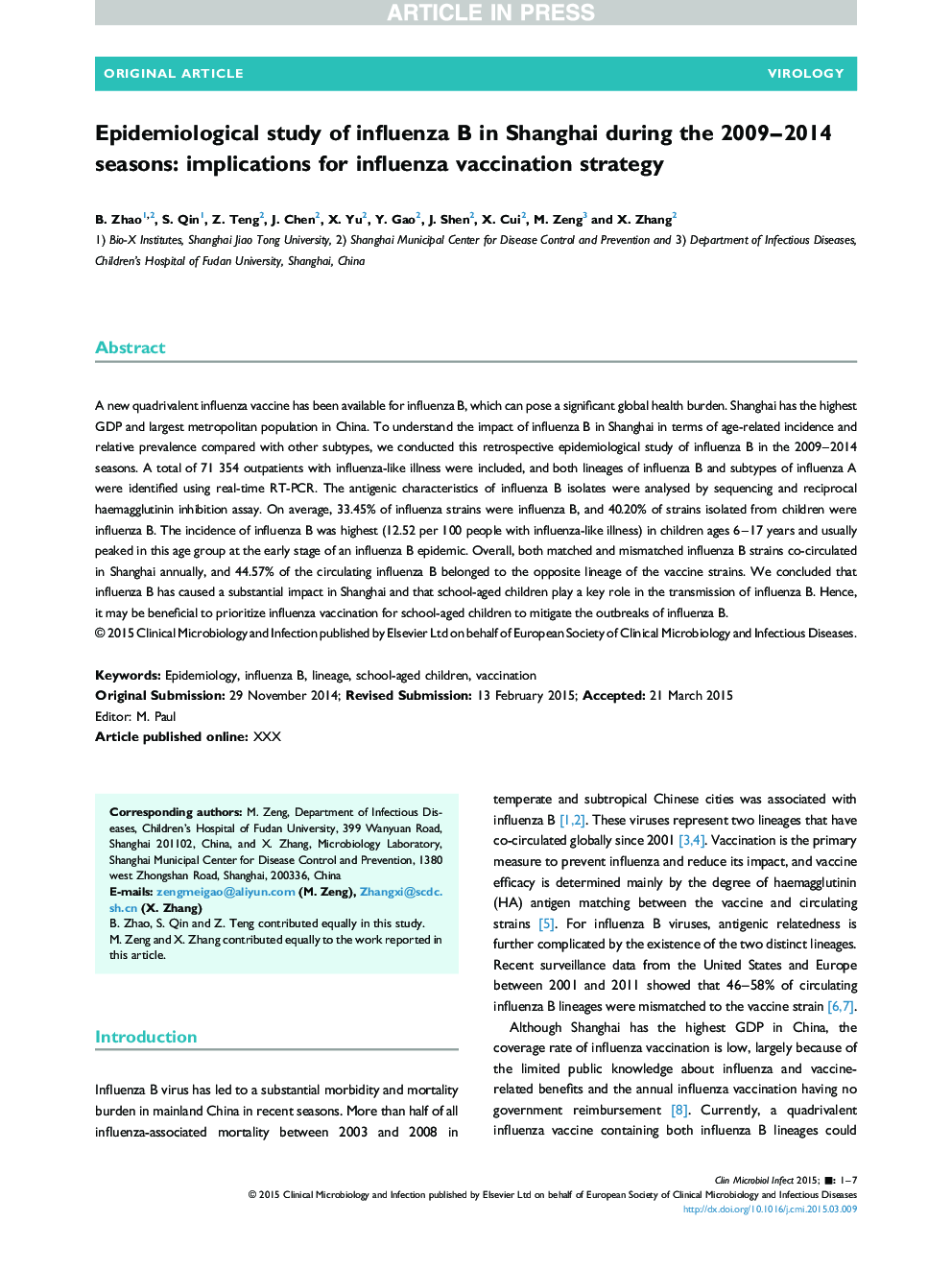| Article ID | Journal | Published Year | Pages | File Type |
|---|---|---|---|---|
| 6129929 | Clinical Microbiology and Infection | 2015 | 7 Pages |
Abstract
A new quadrivalent influenza vaccine has been available for influenza B, which can pose a significant global health burden. Shanghai has the highest GDP and largest metropolitan population in China. To understand the impact of influenza B in Shanghai in terms of age-related incidence and relative prevalence compared with other subtypes, we conducted this retrospective epidemiological study of influenza B in the 2009-2014 seasons. A total of 71 354 outpatients with influenza-like illness were included, and both lineages of influenza B and subtypes of influenza A were identified using real-time RT-PCR. The antigenic characteristics of influenza B isolates were analysed by sequencing and reciprocal haemagglutinin inhibition assay. On average, 33.45% of influenza strains were influenza B, and 40.20% of strains isolated from children were influenza B. The incidence of influenza B was highest (12.52 per 100 people with influenza-like illness) in children ages 6-17 years and usually peaked in this age group at the early stage of an influenza B epidemic. Overall, both matched and mismatched influenza B strains co-circulated in Shanghai annually, and 44.57% of the circulating influenza B belonged to the opposite lineage of the vaccine strains. We concluded that influenza B has caused a substantial impact in Shanghai and that school-aged children play a key role in the transmission of influenza B. Hence, it may be beneficial to prioritize influenza vaccination for school-aged children to mitigate the outbreaks of influenza B.
Related Topics
Life Sciences
Immunology and Microbiology
Microbiology
Authors
B. Zhao, S. Qin, Z. Teng, J. Chen, X. Yu, Y. Gao, J. Shen, X. Cui, M. Zeng, X. Zhang,
